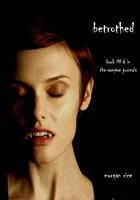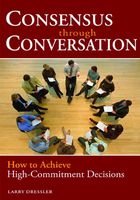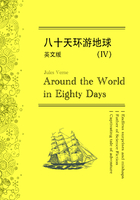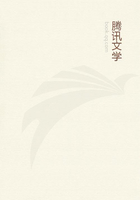Threats and dangers
1929–1937
At the beginning of August 1929, at the Sixteenth Zionist Congress, meeting in Zurich, it was decided to enlarge the Jewish Agency in such a way as would make it 'coextensive with the Jewish people everywhere'. As a result of this decision, the Agency would no longer consist only of the leaders of the Zionist Organization, but would include leading Jews outside Palestine, in particular in Britain and the United States, who were in sympathy with the building up of a Jewish National Home in Palestine. Not only Zionist Jews, whose imperative was to live in Palestine, but non-Zionist Jews who nevertheless looked with sympathy on the idea of a Jewish home, would be represented at the highest level of policy-making.
The two most senior overseas non-Zionist members of the enlarged executive, Louis Marshall (who had been a leading force behind the enlarging of the Agency) from the United States, and Lord Melchett, from Britain, were appointed Chairman and associate Chairman respectively of the Jewish Agency Executive. Both men died shortly afterwards, however. This weakened the hoped for high-profile fund-raising campaigns in the United States and Britain. The worldwide economic depression which then struck the United States with particular ferocity was a further and prolonged setback to the enlarged Agency's fund-raising plans.
The immediate problem for the enlarged Executive came, however, not from the United States, but from within Palestine. The Arabs of Palestine were convinced that the enlarged Executive was intended to be (in the words of an official British report) 'a strong body of wealthy non-Zionists who were expected to provide funds for further Zionist activities in Palestine'. News that the Jewish Agency had been enlarged had, in the British view, 'spread quickly and was, in our opinion, a cause for increased apprehension and alarm among all classes of Arabs'.
There was a second strand of Arab disaffection, which had long preceded the enlargement of the Jewish Agency, and which was exacerbated during the summer of 1929. Throughout the first six months of 1929, Jewish prayers at the Wailing Wall had continued to be a focus of Arab protest. On June 11, the High Commissioner wrote to the Mufti defending the right of the Jews 'to conduct their worship' as in the past. But growing tension between the two communities led, on August 23, to an attack by large crowds of Arabs on individual, unarmed Jews in the Old City of Jerusalem. According to the subsequent British commission of inquiry, 'large sections of these crowds were bent on mischief, if not on murder'.
When news of the violence in Jerusalem reached Hebron, the Jewish school there was attacked, and a Jew killed. On August 25 a large Arab crowd made what the official British report described as 'a most ferocious attack' on the Jewish Quarter. 'This savage attack,' the report continued, 'of which no condemnation can be too severe, was accompanied by wanton destruction and looting.' Within five hours, more than sixty Jews had been killed, including many women and children.
The Arab violence spread rapidly. The kibbutz at Beit Alpha—where the ancient synagogue mosaic had been excavated seven months earlier—was among those that had to beat off Arab attacks. In the village of Motza, just outside Jerusalem, six members of one family were killed, including two children, and their bodies mutilated. On August 26, 'Arab mobs', as the British report described them, killed and wounded forty-five Jews in the northern town of Safed. In the suburbs of Jerusalem, 4,000 Jews were forced to leave their homes, many of which were looted. When the attacks ended at nightfall on August 29, the number of Jews killed throughout Palestine was 133. Eighty-seven Arabs had also died, mostly shot by British troops and police seeking to halt the violence. 'In a few instances', the official report noted, 'Jews attacked Arabs and destroyed Arab property. These attacks, though inexcusable, were in most cases in retaliation for wrongs already committed by Arabs.'
The Haganah, set up less than nine years before, succeeded in protecting a number of settlements. At Hulda, twenty-three Haganah members, led by Ephraim Chizhik, one of the successful defenders of the Neve Shalom quarter of Jaffa in 1921, held off more than 1,000 Arab attackers until, at the end of their resources, they were rescued and evacuated by British forces. Chizhik was killed in an Arab ambush during the retreat.
Many Jewish settlements had had to be abandoned during the riots. One of them, Kfar Uriyyah in the Jerusalem Corridor, had been farmed since 1909, though lack of water and poor access made life there difficult. Once abandoned it was not revived until 1943 when a group of Kurdish Jews, who had worked in Jerusalem as stonecutters, made it their home. In 1949 it was enlarged by an influx of new immigrants from Bulgaria.
***
The killing in Palestine came to an end, but the anti-Jewish propaganda continued. A Jerusalem Arab students' leaflet which was widely circulated on 11 September 1929 declared: 'O Arab! Remember that the Jew is your strongest enemy and the enemy of your ancestors since olden times. Do not be misled by his tricks, for it is he who tortured Christ (peace be upon him), and poisoned Mohammed (peace and worship be with him).' The leaflet urged an Arab boycott of all Jewish shops and trade in order 'to save yourself and your Fatherland from the grasp of the foreign intruder and greedy Jew'.
The British were well aware of the nature of Arab propaganda. As early as September 5 the officer commanding the British troops in Palestine telegraphed to the War Office in London with details of a manifesto 'full of falsehoods and inflammatory material which has been issued to Moslems in other countries'. Two weeks later, on September 29, the High Commissioner, Sir John Chancellor, telegraphed from Jerusalem to the Colonial Office in London: 'The latent deep-seated hatred of the Arabs for the Jews has now come to the surface in all parts of the country. Threats of renewed attacks upon the Jews are being freely made and are only being prevented by the visible presence of considerable military force.'
The High Commissioner went on to point out, 'Propaganda against immigration of Jews into Palestine has recently been conducted amongst Arabs in neighbouring countries on an extensive scale, and if there is any recrudescence of the disturbances in Palestine it is doubtful if incursions into Palestine by Arabs from beyond the frontier could again be prevented.'
On the very day of this warning of Arab pressures outside Palestine, the President of the Arab Executive in Palestine, Musa Kazim Pasha, warned a senior British official that unless the Jewish National Home policy was changed, 'there would be an armed uprising' among the Arabs. Musa Kazim Pasha added that such an uprising would involve, not only the Arabs of Palestine but 'participation of Moslems from Syria, Transjordan and perhaps Iraq'.
It looked as if the Arab hostility to the Jews would lead to full-scale war. In a further telegram to London on October 12, the High Commissioner pointed out that the Arabs of Palestine had recently obtained 'a considerable number of arms' from both Transjordan and the Hedjaz. Further arms were known to have entered the country from Syria. On October 26 a British police report warned that 'gangs of criminals, to attack Jews and British officials, have been formed, and will first function in areas at Haifa and Nablus'.
The Jews were shaken by the intensity of the Arab violence, but were determined not to surrender all that they had created in the past fifty years. On October 25, after a visit to one of the Jewish villages which had been attacked by the Arabs, Arthur Ruppin wrote in his diary, 'On Tuesday, I went from Tel Aviv to visit Hulda, most of which was destroyed and burnt to ashes during the disturbances. Many of the trees have also been burnt. There is nobody there. The place makes a terrible impression. I remembered what hopes we had when we built the first house there twenty years ago. But I was not depressed: we shall rebuild what has been destroyed. On the whole, it is strange that I am one of the few optimists. I have a profound mystical belief that our work in Palestine cannot be destroyed.'
In Ruppin's view, the Jewish community in Palestine would not only continue to exist, but would also 'animate Jewry in the Diaspora' to support it, and to build it up with funds and people. Ruppin also supported an organization set up to try to bridge the gap between Jews and Arabs by proposing a bi-national State in Palestine, one in which Jews and Arabs would have an equal share in the administration, regardless of the size of their respective populations, intermixed geographically, and with no borders between their various communities. The organization, set up in 1925, was called Brit Shalom (Covenant of Peace). One of its leading lights was the first Chancellor of the Hebrew University, San-Francisco-born Judah Magnes. But the idea of a bi-national State was not to the liking of the Zionist leaders.
In December 1929, at a meeting with Brit Shalom, Ben-Gurion explained his opposition: 'Our land is only a small district in the tremendous territory populated by Arabs—most sparsely populated, I might add. Only one fragment of the Arab people—perhaps 7 or 8 per cent, if we take into account only the Arabs of the Asian countries—lives in Palestine. However, this is not the case with respect to the Jewish people. For the entire Jewish nation this is the one and only country with which are connected its fate and future as a nation. Only in this land can it renew and maintain its independent life, its national economy and its special culture, only here can it establish its national sovereignty and freedom. And anyone who blurs this truth endangers the survival of the nation.'
The founding of new settlements had continued even in the year of riots. During 1929 veteran farm labourers founded Pardes Hannah in the coastal plain. 'Hannah's Citrus Grove' was named after a cousin of Baron Edmond de Rothschild. Also founded in 1929 was a coastal moshav, Netanya, named after the American-Jewish philanthropist, Nathan Straus. Within a decade it was a flourishing seaside town.
***
Two clear strands of thought were evolving within the Labour movement. The first was the Marxist, almost Communist orientation of Ha-Shomer Ha'tzair (The Young Watchman), which had been founded in Vienna during the First World War, and which favoured a bi-national Jewish and Arab State in Palestine, looking forward to a shared and intertwined Jewish–Arab destiny. The other strand was Mapai (Mifleget Po'alei Eretz Yisrael—the Party of the Workers of the Land of Israel), founded in 1930, which thought that the Socialism which it espoused was as important to Jewish life as the Bible. Mapai was soon to become the largest and most cohesive Zionist political Party, its predominance lasting long after the establishment of the State of Israel. It was a Socialist-Zionist Party, committed to what it called 'constructive Socialism'. Its ideological leader was Berl Katznelson, who had come to Palestine from Russia in 1909. Its main activist was David Ben-Gurion. Both men were outspokenly pro-Bible and anti-Communist.
There was yet another division in the Zionist Labour ranks between those who wished to see the creation of a Jewish State immediately, even at the cost of a partition between Jewish and Arab areas, and those who were for the 'wholeness' of the country, even at the cost of postponing Jewish sovereignty for many years.
The diversity of Zionist political attitudes was remarkable in so small a community. The long hours spent in debate, and often in sharp disagreement, were also a manifestation of a vitality of spirit and aspiration that caused outsiders to marvel that the Jews had achieved so much, and to recognize their determination to build up their land with idealism as well as the sweat of their brow.
Among the leaders of Mapai was the Russian-born, German-educated Chaim Arlosoroff, who had come to Palestine from Berlin in 1924, and who had been convinced that the Zionist ideal could be realized in cooperation with the Arabs. The riots of 1929 had dented his confidence. He had also been distressed by the ultra-nationalist reaction to the riots by some Jews, warning that 'if one burdens a powerless people, lacking external means of power and fighting for its very survival, with a bloated programme of gestures and illusions, totally devoid of reality—then a terrible caricature is being created.'
The lessons of the 1929 riots were being discussed not only by settlers and political leaders, but by younger Jews who had lived through the disturbances and their aftermath. Twelve-year-old Yigael Sukenik (who later, as Yigael Yadin, was to marry Arthur Ruppin's daughter Carmella) wrote, in a school essay:
When I remember the scenes at the Jerusalem vegetable market at the time of the disturbances, the image that comes to my mind is of a deserted market, empty of all vegetables. I have to ask myself: What would have happened if the disturbances had lasted for half a year, instead of just a month?
Will we always be so dependent on those same Arabs, who at each and every disturbance withhold vegetables from us, and who will start to make fun of us for not being able to survive on our own vegetables, and for our dependence on them? Couldn't we fill the market with vegetables ourselves?
Who can say if more disturbances won't break out in future, and maybe we'll be without vegetables again and the same Arabs will ridicule us for being so dependent on them.
In every settlement and in every neighbourhood we have to grow vegetables and send them to the markets of the cities, and then the Jews in the cities will not have to buy their vegetables from Arabs. And then the Arabs will no longer ridicule us, since we will not be dependent on them. And then it will seem to them that we are able to exist on our own. May this time come soon. Although the disturbances showed us the need for vegetables, we should learn from them other things as well.
As a result of the 1929 violence, the British government set up a Commission of Inquiry to examine the causes of Arab unrest. On 18 December 1929 the Commission examined a senior member of the newly enlarged Zionist Executive, Harry Sacher—a British journalist and lawyer who had spent nine years in Palestine. Sacher told them emphatically that the 'Jews have no intention of dominating or being dominated in respect of any other people in this country. They look upon their own right to create their own civilization as being neither greater nor less than the right of the Arabs to create their civilization.'
Among the other Zionists who gave evidence was Arthur Ruppin, who told the Commissioners—as he noted in his diary on December 31—'that enough land would become available for Jewish settlement' as the Arab farmers would change over to intensive farming, a change-over which they would be able to afford 'with the money they would acquire through selling part of their land to the Jews'.
Published in March 1930, the official report stressed that 'the claims and demands which from the Zionist side have been advanced in regard to the future of Jewish immigration into Palestine have been such as to arouse among Arabs the apprehension that they will in time be deprived of their livelihood and pass under the political domination of the Jews.' The report continued, 'There is incontestable evidence that in the matter of immigration there has been a serious departure by the Jewish authorities from the doctrine accepted by the Zionist Organization in 1922 that immigration should be regulated by the economic capacity of Palestine to absorb new arrivals.'
This was a serious criticism. The report went on to recommend an early declaration of the British government as to the policy which was to be pursued 'in regard to the regulation and control of future Jewish immigration into Palestine'. But mere control or limitation of Jewish immigration was not what the Arabs required. On 1 May 1930 the Colonial Secretary in the British Labour government, Lord Passfield, met with an Arab delegation of senior members of the recently established Arab Executive for Palestine. The delegation, headed by Musa Kazim Pasha and his nephew the Mufti, told the Cabinet's Palestine Committee that the Arab position could be summed up as: 'The Arabs did not accept the Mandate, wished for the abandonment of the Balfour Declaration, demanded the establishment of democratic institutions and the prohibition of the sale of land to the Jews.'
A second official British report was issued in October 1930. Instructed to examine the previous report's conclusions in detail, it stated that, given existing Arab farming methods, there was insufficient land in Palestine to meet the needs of Jewish immigrants. On the basis of this assertion, the British government intimated that future Jewish immigration might have to be curtailed even more rigorously than in the past. The Zionists were dismayed. Deeply angered, Weizmann resigned as President of the Zionist Organization and the Jewish Agency. At a meeting with two senior British ministers, the Colonial Secretary, Lord Passfield, and the Foreign Secretary, Arthur Henderson, Weizmann declared, on November 17, 'We feel our work in Palestine has been during the last few years constantly subjected to scrutiny and inquiry. It is like a plant which is being constantly taken out of the soil to look at its roots; it is not very good for the plant.'
At a second meeting with Passfield and Henderson on the following day, Weizmann warned that two-thirds of the Jewish people—mostly in Eastern Europe—'live under conditions which, without any attempt on my part to harass your feelings, are such as to destroy slowly but surely the vital elements of a great race'. The mass of Jews in those lands were eager to emigrate. Both Poland and Roumania had instituted anti-Semitic policies. Both had declared that they had 'too many' Jews. In Turkey and in Arab countries the Jews were likewise 'seeking an outlet'. And yet, Weizmann continued, 'while they are seeking an outlet, every door of those countries into which the Jews emigrated in the past is gradually being closed before them: America, South Africa, Canada, Mexico, each used to be a country of immigration; they are closed now.'
A few moments later, Weizmann was asked whether it was 'anti-racial', or economic, causes that barred the Jews' way. It was both, he replied, and in a powerful, anguished statement, set out the Jewish dilemma as he saw it, and the place of Palestine in the Jewish perspective:
We have, throughout our history, not disappeared among the nations with whom we have lived. We have remained different; different in religion, different in outlook, and we have therefore been placed in a minority among the people with whom we have lived.
They being in the majority, we were placed in a position which rendered us economically inferior to that majority, so a complex situation has been produced which, as I said, in its external effects moves the Jews to go from one country to another, and today the world is closed to our emigration; with the possible exception of Brazil and Argentina, and with the possible exception of a small infiltration into any other country, there is no room in the world for the mass of Jews who can find no room in their respective countries.
The moral effect of this situation has combined with an age-long tradition of attachment to Palestine, a tradition which forms an integral part of our religion, a tradition which, I think, has made us what we are; a stubborn, stiffnecked attachment to a country which many of us have not seen, but which has been the central part of our history, which has made us look upon Palestine as the country where we wanted to find the realization of an age long dream.
Following this appeal, the British government agreed to abandon the immigration clauses of the 1930 White Paper. Even so, in the letter which he wrote to Weizmann, and which he read out in the House of Commons on 13 February 1931, the Prime Minister himself, Ramsay MacDonald, warned that if, in consequence of the existing Zionist policy of using only Jewish labour, Arab labour were to be replaced, 'that is a factor in the situation for which the Mandatory is bound to have regard'.
The situation inside Palestine was as worrying to the Zionists as Britain's new-found coolness. On 3 December 1931 Arthur Ruppin wrote to a friend, 'Undoubtedly the Arabs have greatly strengthened their political position during the past few years and are much less ready to make concessions to the Jews than they were ten years ago.' Ruppin no longer saw any hope in reliance upon Arab goodwill. His letter continued:
At most, the Arabs would agree to grant national rights to the Jews in an Arab state, on the pattern of the national rights in Eastern Europe. But we know only too well from conditions in Eastern Europe how little a majority with executive power can be moved to grant real and complete national equality to a minority. The fate of the Jewish minority in Palestine would always be dependent upon the goodwill of the Arab majority, which would steer the State.
To the Jews of Eastern Europe, who form the overwhelming majority of all the Zionists, such a settlement would be completely unsatisfactory, and it would kill their enthusiasm for the Zionist cause and for Palestine. A movement which would agree to such a compromise with the Arabs would not be supported by the East European Jews and would very soon become a Zionism without Zionists.
On the last day of 1931 Ruppin wrote, pessimistically, that it was in his view 'doubtful whether a Jewish minority will be able to preserve its national individuality and independence against an Arab majority if the latter controls the machinery of state'. His pessimism was justified. Three months later, on 9 April 1932, a new British High Commissioner in Palestine, Sir Arthur Wauchope, telegraphed to the Colonial Office in London: 'I have learnt from my private conversations that the Jews' objection to any Legislative Council is due to belief that the Arab leaders chiefly desire a Legislative Council in order to check the advancement of a National Home for the Jews. They are not altogether incorrect in this belief.'
The reiterated Arab demand for a Legislative Council, coupled with Arab hostility to Jewish immigration, led the British to adopt a policy of cautious verbal restraint. On April 12, at a meeting of the Cabinet's Committee on Palestine, the official minutes recorded general agreement with the view 'that considerable embarrassment had been caused by past pronouncements of a too specific and definite nature, and that it would be desirable to publish as little as possible with regard to the Government's intentions'.
The future of Jewish immigration into Palestine had become subjected to the policy of a distant government that was afraid to offend either side, but particularly unwilling to aggravate Arab opinion, given the Arab States with which Britain had relations, and the sixty million Muslims in British India, whose loyalty to the imperial crown was an essential feature of the pacification of the Indian subcontinent. One of the reiterated questions asked behind the scenes in British official discussions in London was whether the Jewish needs in Palestine could really be allowed to endanger the wider British need for the support of the Muslim world. One of the greatest attractions of Zionism for Jews worldwide was that the Jews in Palestine would be masters of their own destiny, as the Jews elsewhere were not. Yet the pledges of the Mandate and the activities of the Jewish Agency were both under growing threat from the British willingness to defer to Arab pressure.
In many ways Jewish and Arab nationalism in Palestine were pursuing parallel paths. The Arabic-speaking schools—Muslim and Christian—in Palestine were supported and administered by the Mandate government. H. E. Bowman, the Director of Education, wrote that the Arab leaders in Palestine 'did their utmost to make the schools the nucleus of nationalist inspiration. Their aim was to embarrass the Government by giving the schools a nuisance value; and, at the same time, to inculcate in the Arab youth a passionate nationalism which would show itself in overt acts whenever an opportunity served.' In quoting this, the historian Elie Kedourie commented, 'The same, of course, holds true, mutatis mutandis, of the Zionist schools.'
***
The 1929 riots had not halted Jewish immigration, though they were intended to do so. Nor did they deter Jews emigrating to Palestine from countries where the standard of living, as well as the general security, was much higher. Among the immigrants in 1930 was a twenty-four-year-old American from Louisville, Kentucky, Shimon Agranat. Settling in Haifa, he practised law, and served as a local magistrate. Two years after the establishment of the State, he was appointed a justice of the Supreme Court, of which he became President in 1965.
One result of the 1929 riots was a sharpening of the divide between the Zionists who still sought compromise with the Arabs, and those who believed that military confrontation was the only option. The Betar youth movement, founded in 1923, was emerging as the principal advocate of a militant Zionism, and as an uncompromising opponent of the Zionist-socialist youth groups. With its red-brown uniform, Betar was criticized by mainstream Zionists as having a 'fascist character', reminiscent of Mussolini's Blackshirts. In 1931 the first world conference of Betar was held in Danzig. Jabotinsky was elected its head.
Training in defence was proclaimed the prime duty of every Betar member. In Palestine, Betar work brigades—known from 1934 as 'mobilized groups'—undertook training in self-defence, drilling, street-fighting, the use of rifles and pistols, and military tactics. Membership in 1931 was 22,300. It was to reach 90,000 in the next seven years.
Other youth groups also flourished, among them the Socialist-oriented Scout movement under the leadership of a high school teacher, Zion Ha-Shimshoni, whose members admired most of all the Maccabees, the upholders of Jewish sovereignty in Palestine 2,000 years earlier. Hiking, learning about the land, and exploring its villages and remote places, were the weekly excitement. Annual summer camps were held at Kiryat Anavim, in the hills just to the west of Jerusalem. A high point of the Scouting year was the hike to the Dead Sea and climbing the fortress of Masada: among the youngsters who made the climb was Yigael Sukenik, who, three decades later (as Yigael Yadin), was to excavate the mountaintop with extraordinary results.
***
Immigration from Russia, which had been so important in the first decade of the Mandate, dried up almost completely in the second decade. As Stalin's control over every aspect of Soviet life intensified emigration virtually ceased. In 1932 one of the very last groups of Russian pioneers to reach Palestine founded a kibbutz at Afikim, just south of the Sea of Galilee, near the confluence of the Jordan and Yarmuk Rivers (the name Afikim means 'stream courses'). At first they raised poultry and cattle, and grew bananas, dates and grapefruit. Thirty years later they were to set up a plywood factory, largely for export, and became a partner in a nearby factory producing synthetic materials. By 1967, with 1,290 members, Afikim was one of the largest communal settlements in Israel.
Also founded in 1932, by veteran agricultural labourers of the Second and Third Aliyah, was Kfar Azar, only 6 miles east of Tel Aviv. A moshav, it raised vegetables, dairy cattle and poultry. Another moshav, Kfar Bilu, was also founded that year, in the coastal plain not far from Rehovot. It was part of a 'Thousand Families Settlement Scheme', designed to reverse the trend of living in towns, and to augment the agricultural productivity on which the towns increasingly depended. Another settlement founded in 1932 was Kfar Yonah, in the coastal plain five miles from the sea. Funding came from the estate of a Belgian Zionist, Jean Fischer, who had died in 1929, and whose Hebrew name (Yonah) the settlement commemorates. Fischer's son Maurice, one of the settlement's founders, was later Israeli ambassador to Paris.
The Jewish Legion veterans, whose attempt to found a settlement in 1921 had failed through lack of water, were more fortunate in 1932: on July 19 they founded a moshav, Avihail (Father of Strength), on a waste stretch of sand dunes halfway between Haifa and Tel Aviv. It managed to grow citrus fruits, and survived. On that same long stretch of sand dunes, Barukh Chizhik, whose sister Sarah and brother Ephraim had both been killed in Arab attacks in 1920 and 1929 respectively, acquired a farm near Herzliya in 1932. An expert on citrus cultivation, he worked to improve strains of fruit trees; he had already published (in 1930) a collection of popular legends on the flora of Palestine.
It was in 1932 that Gershon Agron founded the Palestine Post. Ukrainian-born, Agron (his original name was Agronsky) had lived in the United States as a child, coming to Palestine with the Jewish Legion in 1918, at the age of twenty-four. The idea behind a daily English-language newspaper was twofold: to enable the British officials and residents in Palestine to see the full range of Zionist activities and aspirations, and to give the English-speaking Jews in Palestine news from the wider world.
The expansion of the Jewish national institutions was a continual process, building up the structure on which statehood could eventually be based. In 1932 the Jewish Agency moved its agricultural research station from Tel Aviv to Rehovot. Here, two years later, Chaim Weizmann founded a scientific research institute in which Jewish scientists from all over the world were encouraged to participate in the most modern scientific experiments. In October 1932 twelve young German Jews reached the youth village of Ben Shemen. They were the first of five thousand youngsters brought from Germany by Youth Aliyah, set up in Berlin by Recha Freier, and later entrusted by the Jewish Agency to Henrietta Szold, the founder of Hadassah.
***
New villages, a growing urban life, institutions that provided a range of social and research services: the Jewish community in Palestine had much to be proud of by 1932, only a decade since the League of Nations had confirmed the Jewish National Home aspect of the Palestine Mandate. Yet the growing hostility of so many of the Arab leaders to the Zionist endeavour was a permanent cloud over the whole enterprise. There were then, according to the precise British census figures, 192,137 Jews in Palestine, and 1,073,827 Arabs. The Arab population had reached a million the previous year. As the economic situation inside Palestine improved, partly as a result of British road building and social welfare activities, partly as a result of Jewish constructive enterprise, the Arab population grew, both by immigration from the surrounding Arab countries and by natural increase.
The director of the Political Department of the Jewish Agency, Chaim Arlosoroff, was pessimistic about the prospects of Arab–Jewish understanding. He had in mind some revolutionary action whereby the Jews would come to power in Palestine, although still a minority, and use the period of their power to push for mass immigration and the emergence of a Jewish majority. It was not clear how he envisaged this being realized, but he wrote to Weizmann in a private letter on 30 June 1932, 'Zionism cannot, in the given circumstances, be turned into a reality without a transition period of the organized revolutionary rule of the Jewish minority; that there is no way to a Jewish majority, or even to an equilibrium between the two races (or else a settlement sufficient to provide a basis for a cultural centre) to be established by systematic immigration and colonization, without a period of a nationalist minority government which would usurp the State machinery, the administration and the military power in order to forestall the danger of our being swamped by numbers and endangered by a rising (which we could not face without having the State machinery and military power at our disposal).' During this 'period of transition', Arlosoroff added, 'a systematic policy of development, immigration and settlement would be carried out.'
***
In 1932 a Polish Jew, Yitzhak Persky, entered Palestine as a 'capitalist' immigrant, one of the categories permitted by the British (entering with £1,000 or more). He left his family in their Polish village—Vishneva—until such time as he could establish himself and they could join him. His son Shimon Peres later recalled:
For the next two years our contact with him was by letter. He wrote in a bold, confident hand, his letters full of the sweeping optimism that characterized him. Sometimes he enclosed snapshots of himself and his partner, Kabak, both decked out in light summer suits, my father tall and sun-tanned, the other man shorter, but also relaxed and confident-looking.
Eventually, we followed: by train to Istanbul and then aboard a Polish steamship to Jaffa, where our vessel was instantly besieged by a bustling maelstrom of small boats and barges, with longshoremen in red tar-bushes and broad pantaloons offering everything from palm branches to green-coloured iced lemonade. But Father was at hand, in a boat of his own, and he smoothly shepherded us through customs and immigration and on to our new home in what was then the centre of Tel Aviv.
Rehov Ha'Avoda, or Work Street—our apartment was at No. 8—was a turning off King George Street, one of the main thoroughfares of the new Jewish city. The two street names seemed to symbolise our new condition: the main street named in honour of the British colonial ruler, and the side street articulating the Zionist vision of the future Jewish State.
The pressure of immigration from Poland continued to rise, as Polish anti-Semitism impinged on the lives of so many of Poland's three million Jews. Zionist youth groups were also active in every Polish town. One of these movements, Gordonia, named after the Zionist pioneer A. D. Gordon, provided the motivation and settlers for a kibbutz founded in 1933 in Lower Galilee, west of Nazareth. Named Kfar Ha-Horesh (Woodland Village), its members were employed in its first years planting forests on the surrounding and hitherto barren hills. Their largest plantation was the King George V Forest.
Gordonia, which had a large following in Poland, and sent many youngsters to Palestine, was declaratively non-Socialist. Its members refused to celebrate the First of May or to carry the Red Flag.
***
On 30 January 1933 Hitler came to power in Germany. The anti-Jewish frenzy that had accompanied his political campaigns and path to power was immediately translated into action. Physical attacks on German Jews, their exclusion from the professions and a campaign to drive them out altogether from thousands of villages and even small towns led to a sudden upsurge in emigration. German Jews began to reach Palestine in ever-growing numbers. The pattern of immigration, dominated for the previous ten years by Jews from Poland, changed dramatically. Not only was emigration from Germany encouraged by the new German authorities, but the restrictions on immigration to Palestine were at that time minimal. The resulting influx of refugees from Germany altered the demographic balance of Palestine Jewry.
Few of the German Jewish newcomers were Zionists. Their motivation was to escape persecution. But many of them were sympathetic to the aims of Zionism and entered into the spirit of the Zionist experiment. Indeed, they were soon to be found in every branch of Jewish national life, above all in the professions as doctors, teachers, scientists, architects, photographers, painters and poets. In Palestine the Mapai leader Chaim Arlosoroff, who had begun to doubt Britain's commitment to continuing Jewish immigration, focused his energies on organizing the rapid, mass emigration of Jews from Germany. In the spring of 1933 he travelled to Germany to open negotiations with the German Nazi authorities for the transfer of German-Jewish property to Palestine. That summer, however, while walking on the beach with his wife Sima in Tel Aviv, he was shot and murdered.
The leader of a clandestine group of Jewish underground 'activists', Abba Ahimeir, was charged by the Palestine police with plotting Arlosoroff's murder. Born Shaul Heisinovitch in Russia, thirty-five years earlier, Ahimeir had, as a young man, been attracted by both Communism and Socialism. In 1928 he had joined Jabotinsky's Revisionists, advocating active opposition to the Mandatory government. In the interests of a Jewish State, he believed that illegal action was justified.
Ahimeir had become the leader of an extremist Revisionist faction, whose newspaper, Hazit Ha-Am (The People's Front) violently attacked the Labour movement and the official Zionist leadership, including Arlosoroff. Two rank-and-file Revisionists, Avraham Stavsky and Zevi Rosenblatt, who were also charged with the murder, were identified by Arlosoroff's widow. They denied the accusation. The district court acquitted Ahimeir and Rosenblatt, but convicted Stavsky. He was later acquitted, however, by the Supreme Court for lack of corroborating evidence. The defence accused the police of manipulating the widow's testimony and other evidence for political reasons, and argued that the murder was connected with an intended sexual attack on Mrs Arlosoroff by two young Arabs. One of these Arabs, who was in prison on another murder charge, twice confessed to having been involved in Arlosoroff's murder, but twice retracted his confession, accusing Stavsky and Rosenblatt of having bribed him to confess.
In the aftermath of Arlosoroff's murder members of the Labour movement, with few exceptions, regarded the widow's testimony as proof of the existence of criminal fascist tendencies among Revisionists. For their part, the Revisionists, and many other non-Labour circles including the Ashkenazi Chief Rabbi, Abraham Isaac Kook, maintained Stavsky's innocence and denounced the affair as a blood libel perpetrated by Jews against Jews.
The Arlosoroff murder continued to exacerbate relations between the Labour Zionists and the Revisionists for many years. At the time of Yitzhak Rabin's assassination in 1995, his widow Leah remembered how it took place 'within days of my first setting foot in Palestine as a little girl'. She and her husband had often discussed it in later years. 'No matter who killed Arlosoroff,' she wrote, 'the Revisionists had created a climate that provoked his death. They spread vicious rumours and promoted articles contending he was a Nazi collaborator.'
***
In August 1933 the Eighteenth Zionist Congress, held that year in Prague, called for the Jewish National Home to be built up 'as speedily as possible and on the largest scale'. Within a month of this declaration, Musa Kazim Pasha, the President of the Arab Executive, again called for an immediate halt to all further Jewish immigration. That October, as immigration from Germany climbed, Arab protesters attacked British public buildings and police posts in Nablus, Jaffa and Jerusalem. In the resulting violence, one policeman and twenty-six Arab rioters were killed. Bloodshed was becoming a cruel byproduct of the political debate. But the building up of the Jewish National Home, though often overshadowed by violence, was never halted. In 1933 Polish and German immigrants combined to establish Kfar Pines, in the northern part of the coastal plain. They took their name from Yehiel Michael Pines, the Russian-born Hebrew scholar who, in the 1880s, had been one of the early advocates of Hebrew as the spoken language of the Jews of Palestine, and the patron of the pioneering Gederah settlement in 1884. Thus, in the names of the new villages, the founders and visionaries were remembered.
The impetus to found new settlements was not restricted to new immigrants. In 1933 a group of veteran farmers founded Kfar Vitkin, in the Hefer plain north of Tel Aviv. The land for Kfar Vitkin had taken three years to prepare for farming. It was to become the largest moshav in the country, with more than 1,100 inhabitants ten years later (after which numbers fell). Orange groves, dairy cattle and poultry were its main produce. It was named after Josef Vitkin, a Russian-born pioneer who had emigrated to Palestine in 1897.
Another settlement founded in 1933, in the coastal plain, was Mishmar Ha-Sharon (Guard of the Sharon). Not only was it a pioneer in intensive, irrigated farming, it also pioneered the commercial raising of flowers—including the biblical Lily of Sharon; biblical experts say that this lily was almost certainly a rose: the kibbutz grew both.
Also founded in 1933, by a group of veteran pioneers who had come from Russia with the Third Aliyah a decade earlier and had been at the centre of the defence of Hulda during the 1929 riots, was Kfar Chaim, named after Chaim Arlosoroff. Kfar Chaim flourished, its prosperity based on citrus groves and dairy cattle.
***
As the number of immigrants from Germany rose, a group of them banded together to form a farming settlement of their own in 1934. The place which they chose was on the coast only six miles from the border with Lebanon. It was called Nahariya, from the stream—nahar—on which it was located. The first villagers were middle-class immigrants, and it proved hard for them to change from their former professional and commercial lives to that of farmers. Soon, however, they found a new occupation as Nahariya developed into a small seaside resort. But a few miles to the east were a number of Arab villages and in those early days a sense of isolation from the main areas of Jewish settlement was always present.
It was not only the sand dunes of the coast and the emptiness of northern Galilee that attracted Zionist endeavour. In the spring of 1934, David Ben-Gurion made a journey through the Negev Desert to the Gulf of Akaba. Twenty-five years later he would tell his colleagues in government what he found there: a few mud huts 'at the end of nowhere' which served as a 'primitive post' for the British Mandate police. It was called Um Rashrash, the Arabic for 'Mother of the Rustling Sound'. Shimon Peres, one of those to whom Ben-Gurion described his journey, later wrote:
Away to the south lay the clear blue waters of the Gulf, sparkling in the sun, and set against the crimson mountains of Edom. Apart from the two mud huts, the beach was empty, and behind it, stretching to the north, rolled the parchment-like desert. This spot was more evocative of the last vestige of a romantic mood conjured by Lawrence of Arabia than of the future gateway to the new world.
Ben-Gurion had a vision of this site, at the southernmost tip of what was then Palestine and reachable at that time only after an arduous trek, as a bridge between a future Jewish State and the continents of Africa and Asia. And he kept coming back to this idea.
He was firmly convinced that the wilderness of the Negev, empty of people, would one day become a vital centre of Israel development. The exploitation of potash, phosphates and other minerals would provide the basis of large industrial plants whose products would be carried over the desert to Eilat, and this route would serve as an 'overland Suez Canal'.
'The bare Negev and the open Eilat,' Peres added, 'seemed to him to offer the most fruitful development prospects for Israel.'
***
The efforts of the Zionist leaders to come to some agreement with the Arabs of Palestine in the early 1930s were continuous. The most important of these efforts came on 18 July 1934, when Ben-Gurion and Dr Magnes met Auni Abdul Hadi, the leader of the movement devoted to Palestinian Arab independence. Ben-Gurion asked Abdul Hadi bluntly, 'Is it possible to reconcile the ultimate goals of the Jewish people and the Arab people?' and went on to tell his Arab interlocutor:
Our ultimate goal is the independence of the Jewish people in Palestine, on both sides of the Jordan, not as a minority but as a community of several millions. In my opinion, it is possible to create over a period of forty years, if Transjordan was included, a community of four million Jews in addition to an Arab community of two million. The goal of the Arab people was independence, and the unity of all Arab countries. If the Arabs agreed to our return to our land, we would help them with our political, financial and moral support to bring about the rebirth and unity of the Arab people.
Abdul Hadi became 'enthusiastic when he heard this', Ben-Gurion noted in his account of their talk, 'and said that if with our help the Arabs would achieve unity he would agree not to four million, but to five or six million, Jews in Palestine. He would go and shout in the streets, he would tell everyone he knew, in Palestine, in Syria, in Iraq, in Damascus and Baghdad: Let's give the Jews as many as they want, as long as we achieve our unity.' Then, Ben-Gurion recorded, Abdul Hadi's enthusiasm abated, and he 'reverted to his mocking and sceptical tone and asked what guarantees the Arabs would obtain. The Jews in Palestine would increase in number to four million, while the Arabs in the other countries would be left with the English, the French, and the promise given by the Jews. Did we think the Arabs could rely on our promises and declarations?' Ben-Gurion's account continued:
I told him that if we should reach agreement on the main point we would seek together practical means whereby each side could insure the interests of the other. Even we had not yet attained four million in the country, the realization of Zionism was a long process, and the rebirth of the Arab people would also not come about overnight.
Auni then asked Ben-Gurion whether the Jews would help the Arabs get rid of France and England. 'I answered that I had to speak frankly on this matter too,' Ben-Gurion wrote. 'We would not fight against the English. We, too, had grievances against the Mandatory Government, perhaps no less than those held by the Arabs. But the English had helped us, and we wanted them to continue to do so. And we were faithful to our friends. The building up of the Arab economy, the raising of the level of culture, public education, the development of the various Arab countries—all these preceded and conditioned political liberation. In that positive task we were prepared to render all possible assistance to the Arab people. The only question was whether the Arabs were prepared to let us work peacefully and undisturbed in Palestine.'
When Dr Magnes asked Auni whether the Arabs were willing to 'sacrifice Palestine in order to attain the broader goal in the other Arab countries', Ben-Gurion interjected to say that 'we did not wish the Arabs to "sacrifice" Palestine. The Palestinian Arabs would not be sacrificed so that Zionism might be realized. According to our conception of Zionism, we were neither desirous nor capable of building our future in Palestine at the expense of the Arabs.'
Ben-Gurion then told Auni:
The Arabs of Palestine would remain where they were, their lot would improve, and even politically they would not be dependent on us, even after we came to constitute the vast majority of the population, for there was a basic difference between our relation to Palestine and that of the Arabs. For us, this Land was everything and there was nothing else. For the Arabs, Palestine was only a small portion of the large and numerous Arab countries.
Even when the Arabs became a minority in Palestine they would not be a minority in their territory, which extended from the Mediterranean coast to the Persian Gulf, and from the Taurus Mountains to the Atlantic Ocean.
For the Jewish people, Ben-Gurion told Auni, 'it was essential that they be the majority here, as otherwise they would not be independent.' But the Arabs, with the vast Arab hinterland and neighbouring Arab regions, 'could not turn into a minority'. Auni seemed to agree with this, for when Magnes asked him whether the Arabs in the various countries 'really felt their unity' he replied that 'while this might not yet be true of the masses, the Arab intelligentsia in all countries—Syria, Iraq, Saudi Arabia, Tunis, Morocco—did feel that they belonged to one culture, one past, one nation'.
The conflict of national interest centred, as Ben-Gurion had seen, upon a basic inequality that whereas many Arab nations already existed, and the Arab world extended from the Atlantic coast of Morocco to the waters of the Persian Gulf (and the Muslim world far beyond that), the Jews had no existing country in which they were sovereign, or a majority. This inequality was heightened in the perception of Palestinian Jewry by the events in Germany. There was no Jewish sovereign state, however small, to which the Jews of Germany could go as of right and settle in their own land. Jewish nationalism, as formulated by the Zionists for the past third of a century, had not yet secured such a safe and sovereign haven.
In 1934 as the persecution of Jews in Germany continued and it became clear that the Nazi racial policies were not—as some people hoped—going to abate, 42,000 Jews entered Palestine with the permission of the British. This was a record number of immigrants for any year in the country's history. One of the first moshavim to be established by Jews from Germany was Kfar Bialik, founded just inland from Haifa Bay in 1934, and named after the Russian-born Hebrew writer Hayyim Nahman Bialik who had just died and who had lived briefly in Berlin before emigrating to Palestine a decade earlier. Another new settlement, Kfar Shmaryahu, named after the early Russian-born Zionist leader Shmaryahu Levin, was founded three years later. Its immigrants were mostly educated middle class professionals; its main activity, from the outset, was intensive poultry breeding.
It was not only German Jews who were on the move after 1933. Immigration from Poland and Roumania also remained high, as fears spread of Nazi and anti-Jewish movements gaining the ascendancy elsewhere. In 1934 a group of religious Jews from Eastern Europe founded Kfar Ha-Ro'eh, a moshav which quickly became the spiritual centre for the religious moshav movement. As well as farming, it gave a central place to religious studies in its yeshiva (religious academy). The name of the moshav was made up of the Hebrew initials of one of the spiritual mentors of religious Jews in Palestine, Rabbi Abraham Isaac Kook.
Suspicion of British policy, and a fear that the British would in the end call a halt to Jewish immigration, led the Revisionist movement to press for even more rapid Jewish immigration and for immediate Jewish settlement, not only in Palestine, but also in Transjordan. In 1934 Jabotinsky introduced for his youth movement followers the Betar Oath: 'I devote my life to the rebirth of the Jewish State, with a Jewish majority, on both sides of the Jordan.'
The Revisionists carried out policies which led to an exacerbation of British antagonism towards Jewish activities. In 1934 they hired a ship that brought 117 'illegal' Jewish immigrants from Europe to Palestine: Jews who did not have the necessary permission to immigrate. This was the first Revisionist venture in a move which was to see fifteen more ships set off that same year from the ports of the Black Sea towards Palestine. Most of them were intercepted by the British navy and their human cargo either interned or deported.
Both the aims and the methods of the Revisionists roused hostility and criticism in British circles. In a 'very secret' memorandum dated 28 March 1934, the then Colonial Secretary, Sir Philip Cunliffe-Lister, warned his Cabinet colleagues that 'illicit immigration' had assumed 'alarming proportions', and would be strictly combated. But there was 'no use blinking the fact', his memorandum continued, 'that today Arabs and Jews are diametrically opposed on the whole subject of immigration. The Arabs claim that nothing will satisfy them except a complete embargo on all further immigration; and Jewish extremists do not make matters easier by their claims to unlimited immigration, and by their avowed determination to make Palestine not merely a National Home, but a Jewish State.'
The Revisionists had made it clear that for them Jewish statehood was the aim of all immigration and settlement activity. The Jewish Agency avoided any open mention of a State. But the Colonial Secretary believed that 'even the moderate Jewish leader is appealing to his constituents, I have no doubt, that the picture of the Jewish National Home often expands into one of the Jewish State'. British fears of Jewish statehood went side by side with the constructive efforts of the Zionists to create national institutions at every level. In 1934 Hannah Chizik, sister of the agriculturist Barukh and of Sarah and Ephraim who had been killed during Arab riots, founded a boarding school in Tel Aviv where girls from the kibbutzim could learn agriculture. Behind the school—which was a typical example of Tel Aviv Bauhaus architecture, was a field where cows could graze and a cowshed. The girls sold the cows' milk and the fruit and vegetables which they grew in a small shop at the school entrance. From these sales they financed their education.[1]
Anxious to build a Jewish entity, and to increase the possibilities for Jewish immigration, the Jewish Agency employed only Jews in the major Zionist enterprises, a policy that was resented by Arabs in search of work. Fearing a further outbreak of Arab violence, the Haganah secretly purchased rifles and ammunition abroad and smuggled them into Palestine by sea. In October 1935 part of a consignment from Belgium broke open while being unloaded at Jaffa. In protest, the Arabs declared a general strike and held demonstrations in Jaffa, Haifa and Jerusalem. That autumn, hoping to improve relations with the Arabs, the Jewish Agency added 50 per cent to the land hitherto reserved for Arabs in the Huleh basin. This was land that had been allocated to a Jewish group by the Mandate administration.
In 1935 an even higher number of Jews entered Palestine than in the previous year: 61,000 as against 42,000 (among them was two-year-old Igael Tumarkin, brought by his parents from Dresden, who was to be one of the leading painters and sculptors of the State of Israel). The British government, committed since 1921 to consider the 'economic absorptive capacity' of the country in its immigration policy, began to look with alarm at more Jews entering Palestine than the land could economically support. Here was a clear case, so the Arabs argued, for imposing strict immigration restrictions. Two years later, however, a British Royal Commission, headed by Lord Peel, commented on this upsurge in Jewish immigration: 'Far from reducing economic absorptive capacity, immigration increased it. The more immigrants came in, the more work they created for local industries to meet their needs, especially in building: and more work meant more room for immigrants under the "labour schedule". Unless, therefore, the Government adopted a more restrictive policy, or unless there were some economic or financial set-back, there seemed no reason why the rate of immigration should not go on climbing up and up.'
This was a powerful endorsement of Jewish immigration. Among the settlements founded in 1935 was Beit Ha-Shittah (House of the Acacia Tree), in the Jezreel Valley. It was named after the biblical site of the defeat of the Midianites by Gideon. The founders were a combination of Jews from Germany and Palestinian-born Jewish youth, the latter known as Sabras, from the cactus fruit that is tough and prickly outside, sweet and succulent inside. Also founded by immigrants from Germany that year was Yedidyah (Friend of God), in the coastal plain. It was named after the Jewish philosopher Philo of Alexandria, whose influence on early Christianity was considerable; his name had been Hebraized as Yedidyah in the nineteenth century. Love of God, as opposed to fear of God, was the virtue he stressed.
Also founded in 1935 was Sha'ar Ha-Amakim (Gateway of the Valleys), 8 miles inland from Haifa, on a ridge overlooking the Jezreel Valley to the north and the Zebulun Valley to the south. Its founders were immigrants from Yugoslavia.
***
Events in Germany in 1935 made Palestine seem more than ever an essential focus of Jewish hopes. On September 15 a Nazi Party convention held in Nuremberg accepted two special statutes, known subsequently as the Nuremberg Laws, whereby no Jew could be a German citizen. This put even greater pressure on German Jews to go to Palestine, where the Jewish National Home though not a Jewish State certainly felt like one to all the intents and purposes of daily life there. Two-thirds of the population was Arab, but most of the Jewish population lived in compact areas that were contiguous with each other. Tel Aviv was an entirely Jewish city. Other Jewish towns had flourished, or were being built up. The Yishuv, the Jewish community, prided itself on the modernity of its life and culture.
Every aspect of Jewish life was catered for in Palestine. In 1936, the year of Hitler's much-vaunted Berlin Olympics, the Maccabi Sports Organization held its own international games (often called the Jewish Olympics) near Tel Aviv. Jews came to compete from almost every country of the Diaspora, including Germany. After the games were over many of the competitors, not only from Germany but from Austria and Czechoslovakia, decided to remain in Palestine. They did so 'illegally', having been granted permission by the Mandate authorities to enter the country only in order to take part in the games. They were fortunate to have somewhere to go, where their presence would be accepted without demur, for the Maccabi Organization decided that year to found and to finance Kfar Ha-Maccabi, a kibbutz just inland from Haifa.
Also in 1936, the Palestine Orchestra was established. Its founder was the Polish-born child prodigy, Bronislaw Huberman, who in 1892, at the age of ten, had played the violin before the Emperor Francis Joseph in Vienna. Huberman gathered together a group of mostly German-Jewish refugee musicians, and persuaded Arturo Toscanini to conduct the opening concerts that December in Tel Aviv and Jerusalem. The repertoire included music by the German-Jewish composer Felix Mendelssohn, whose works had been banned by the Nazis. In their first Jerusalem concert in 1937, which was attended by the Peel Commissioners, all the works were by Beethoven.
The literary life of Jewish Palestine also flourished. The influx of Jewish writers, poets, composers, artists and actors from many different lands combined with the working face of Zionism to create a strong sense of nationality. In 1936 the Hebrew Writers' Association chose as its chairman Ukrainian-born Yosef Aharonovitch, who had lived in Palestine for thirty years. A leader of the Labour movement, and director since 1922 of the Bank Ha-Poalim (Workers' Bank) in Tel Aviv, he wanted all agricultural and industrial work on Jewish settlements to be carried out by Jews. He was a strong advocate of integrity in public life and efficiency in the national Jewish institutions and wrote many articles to this end. He also believed that preparations should be made for mass immigration.
Academic life benefited as much as literary and artistic life from immigration. In 1936 a leading teacher of rabbinical studies, Chanokh Albeck, reached Palestine from Berlin, where he had been teaching for the previous decade. He was immediately made Professor of Talmud at the Hebrew University, where he taught for the next twenty years, and was the author of many scholarly works of biblical scholarship in both German and Hebrew.
Kibbutz Ha-Zorea (The Sower) was established in 1936 by 150 recent immigrants, German-Jewish youth of the Werkleute (Men of Action) youth movement, who had come to Palestine two years earlier. The kibbutz was on the south-west rim of the Jezreel Valley. Its founders took part in the planting of a substantial forest in the nearby hills. One of those who visited Ha-Zorea several times in its early days was a patron of the Werkleute, Wilfred Israel, the son of a wealthy Berlin Jewish department store owner, who had become active in helping Jewish emigration from Germany. He was killed in an air crash in the Second World War while travelling from Lisbon to London. A museum in kibbutz Ha-Zorea was named after him and it contains many works of Far Eastern art which he donated to them in his will.
***
Between 1933 and 1936 the Jewish population of Palestine increased from 234,967 to 384,078: from just over 20 per cent to just under 30 per cent. In protest against any further Jewish immigration, the Arabs began a general strike on 15 April 1936. That day three Jews travelling between the Arab towns of Tulkarm and Nablus were attacked and killed. On the following day, a small dissident Jewish group, calling itself the Irgun Zvai Leumi (National Military Organization, also known in short as Irgun, and, from its Hebrew initials, as Etzel), which held Jabotinsky as its inspiration, carried out a reprisal killing against Arab workers near Tel Aviv. Within forty-eight hours, Arab gangs were searching for Jews throughout Jaffa, attacking them and setting fire to Jewish-owned shops.
On May 7 the Arab leaders met in Jerusalem and demanded an immediate end to all Jewish immigration, a ban on any further Jewish land purchase, and an Arab majority government. Jewish farms were attacked all over Palestine: Jewish houses were burnt, shops looted and whole orchards destroyed. Attacks on individual Jews led, within a month, to the deaths of twenty-one Jews, several of them women and children.
The British responded to this Arab violence by announcing on May 11 that they intended 'to suppress all outbreaks of lawlessness'. Six Arab rioters had been killed by the police by the middle of May. Denouncing the reprisals carried out by the Irgun, the Jewish Agency urged the Jews to exercise restraint. Jews continued to be killed throughout Palestine—leading to a total death toll of eighty by October. In trying to keep the peace, British troops killed more than 140 Arabs, while thirty-three British soldiers were killed in armed clashes with Arab bands.
For the Jews, it was galling to see what little effect the British protection could have. During the summer of 1936 thousands of Jewish-farmed acres were destroyed and fruit orchards cut down in deliberate acts of Arab vandalism. Jews were killed while travelling in buses, or even sitting in their homes. Whole Jewish communities fled, among them the ninety-four Jews, mostly from Kurdistan and other Muslim countries, whose families had lived in the predominantly Bedouin town of Beisan since the beginning of the century; the 350 Jews living in the predominantly Arab town of Acre; and all but one Jewish family of the ten families who lived in the Arab village of Peki'in, where, according to tradition, their ancestors had lived since Roman times.
The Haganah reacted to the Arab attacks by establishing mobile patrols trained specifically to counter-attack, and to do so at night. One of these patrols, led by a former officer in the Red Army, Yitzhak Landsberg (later Sadeh), and based on Kiryat Anavim just outside Jerusalem, set the pattern by using the threatened settlement as a base for counter-attacks on the nearby Arab villages from which the raiders had come. 'We learned to move in the darkness,' one of its members later recalled, 'what to wear, how to communicate with the other patrol members, how to whisper orders, how to fall and how to rise, how to shoot and how to hide, how to listen and what to listen to, how to establish a front-line position and how to construct it—and above all how to anticipate the intentions of an armed attacker before he could mount his attack.'
***
On 18 May 1937 it was announced in the House of Commons that a Royal Commission would be set up to investigate the causes of unrest in Palestine. Lord Peel was appointed Chairman, with Sir Horace Rumbold, a former British Ambassador to Berlin, as his deputy. The Commissioners made an extended tour of Palestine, visiting the main Arab centres, and several Jewish settlements, as well as Tel Aviv. John Martin, the Commission's Secretary, later recalled an incident which made a considerable emotional impact on Lord Peel and his colleagues. Visiting a Jewish agricultural settlement the Commissioners saw a man living in a rough hut, but with a piano and musical scores. Sir Horace Rumbold was certain that he had met the man before. On asking his name, it appeared that he was a well-known German musician from Leipzig who had once played at the British Embassy in Berlin. 'We all felt uncomfortable about his plight,' Martin recalled. Rumbold began to commiserate with the man. 'This is a terrible change for you,' he said, condoling. But the musician replied, to Rumbold's surprise, 'It is a change, from Hell to Heaven.'















